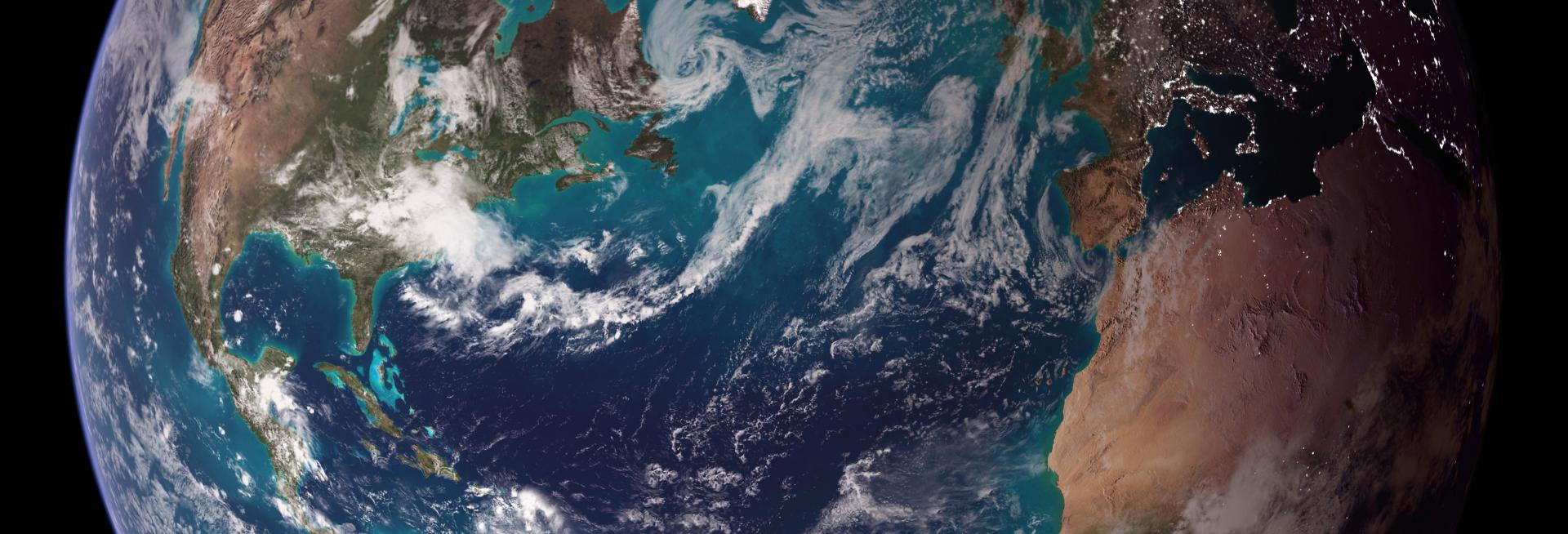Research from the Department of Physics established the concept of a ‘global carbon budget’, a limited cumulative amount of CO2 that can be emitted before global average temperatures rise above a target threshold. The research, led by Professor Myles Allen, highlighted that the risk of dangerous anthropogenic interference in the climate system is primarily determined by the total carbon dioxide emissions accumulated over time, not by emissions in any given year or commitment period; in terms of defining policy, this means setting a date to achieve net zero CO2 emissions rather than simply aiming to stabilise CO2 concentrations.
Challenges for policymakers
For 20 years prior to the late 2000s, the stated goal of global climate policy was 'stabilisation of greenhouse-gas concentrations in the atmosphere at a level that would prevent dangerous anthropogenic interference in the climate system'. Establishing what that level was proved challenging because, as research by the Department of Physics demonstrated, it was possible to generate plausible climate models that displayed 2 to 3 times the best-estimate equilibrium warming for any given stabilisation of CO2. An additional challenge was that these high-response models could not straightforwardly be ruled out by observations, because of the non-linear relationship between long-term equilibrium warming and quantities that can be observed.
In 2005, Professor Allen’s group proposed an alternative framing to this ubiquitous 'stabilisation scenario': the new approach focused on non-equilibrium peak warming under a scenario in which atmospheric concentrations peak and decline, noting that this is much more directly constrained by observations than the equilibrium warming. In 2005, at the ‘Stabilisation 2005’ international workshop, the group presented the hypothesis that this implied a finite carbon budget for CO2 emissions over all time – provisionally estimated at one trillion tonnes of carbon to limit warming to 2°C. This was confirmed using a range of models and approaches in a series of papers published in 2009 introducing the now-famous ‘trillionth tonne’ concept.
Quantitative estimates
An accurate determination of the carbon budget for various levels of warming was a crucial part of the 2014 IPCC 5th Assessment Report (AR5) and the Department of Physics was involved in work led by the Canadian Centre for Climate Modelling and Analysis, with collaborators from Concordia University, that provided quantitative estimates. A strength of the AR5 carbon budgets for CO2-induced warming was that they were scenario-independent and supported by both observations and models.
In 2015, the Paris Agreement called upon the scientific community to assess scenarios limiting global warming to 1.5°C above pre-industrial levels. AR5 had provided a carbon budget for 1.5°C that attempted to account for other climate warming agents, but it was based solely on models. Research led from Oxford demonstrated that the current level and rate of human-induced warming determined outstanding carbon budgets under such ambitious climate goals. This research included an analysis and figure that directly anticipated the key opening figure of the Summary for Policymakers of the IPCC Special Report on 1.5°C. It demonstrated transparently that achieving net zero carbon dioxide emissions around 2050 would be necessary to limit warming to 1.5°C, a finding repeatedly cited in national legislation and corporate decisions since then in support of net zero 2050 goals.
Changing climate policy
The group’s work has gone on to inspire huge and wide-reaching change in climate policy, including Article 4 of the 2015 Paris Agreement which recognises the need for net zero CO2 emissions, the 2019 UK legislation and the 2020 EU Climate Law, both setting targets of net zero emissions by 2050, and China’s commitment to carbon neutrality by 2060.

